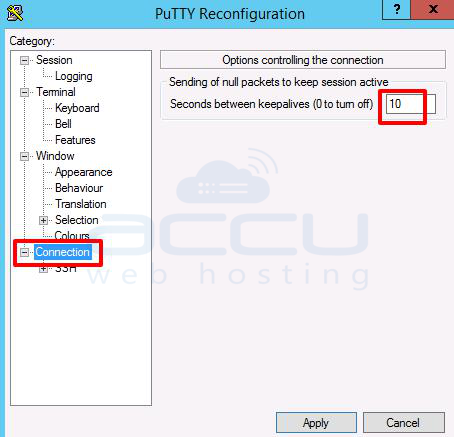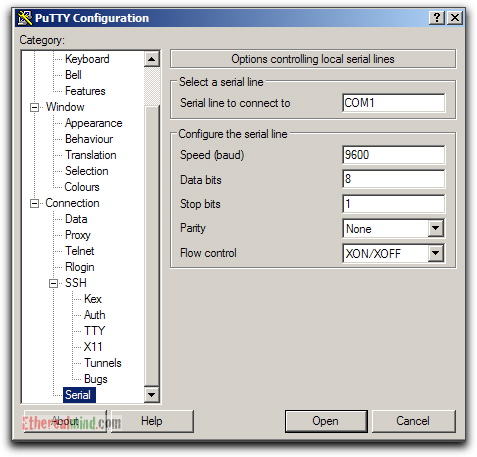
- #Putty ssh timeout how to#
- #Putty ssh timeout serial#
- #Putty ssh timeout full#
- #Putty ssh timeout password#
This will make the server send the clients a “null packet” every 120 seconds and not disconnect them until the client have been inactive for 720 intervals (120 seconds * 720 = 86400 seconds = 24 hours). If you’re a server admin, you can add the following to your SSH daemon config in /etc/ssh/sshd_config on your servers to prevent the clients to time out – so they don’t have to modify their local SSH config: ClientAliveInterval 120 If you are running windows client program you should configure it in Putty client. This will send a “null packet” every 120 seconds on your SSH connections to keep them alive. sshconfig is a system configuration file for OpenSSH which allows you to set options that modify the operation of the linux client programs. If you’re on Mac or Linux, you can edit your local SSH config file in ~/.ssh/config and add the following line: ServerAliveInterval 120

To do that, you setup the SSH server to send the “null packets”, and you’ll prevent a timeout on all the SSH connections every client makes to the server.įortunately, the setups are not exclusive, so you may setup both your client and all your servers and everything will run smoothly.
#Putty ssh timeout how to#
If your clients (customers, users, kids) are fed up with the SSH timeout, you can either instruct them on how to configure their SSH clients – like pointing them to this article – or you can configure the server itself to avoid SSH session timeout. If you are annoyed with your own SSH sessions timing out when you’re connected to servers, this is what you want to do. If you setup your SSH client to send the “null packets”, you’ll prevent an SSH timeout on all the SSH connections you make from your computer. It doesn’t matter if the packet is sent from the client or the server, as long as there is some communication going on between the two. Here’s how to keep your SSH sessions alive and prevent the SSH timeout:īy sending a “null packet” between the client and the server at a specified interval that is smaller than the timeout value, we can avoid SSH timeout. It can store log of hosts and preferences for later use.SSH timeout due to inactivity is annoying. In this example, we do 120 seconds which should be more than enough.

#Putty ssh timeout serial#
Putty Support for local serial port connections. To accomplish that, simply do the following: First Open Putty Then go to the Connection tab Under Sending of null packets to keep session active Seconds between keepalives (0 to turn off), enter a value in the text box.

It supports IPv6 support, 3DES, AES, Arcfour, Blowfish, DES. Putty is a completely free and available in several languages.
#Putty ssh timeout password#
For that, the user needs to know some information such as the client's IP address and a password also may be required. The SSH Connection has timeout due to inactivity at the TCP communications level where the server will decide to disconnect if it sees no activity on the connection for a certain amount of time. Open PuTTY Click on the Connection Category in the left menu Check the box for Enable TCP keepalives (SOKEEPALIVE option) This story, 'How to prevent SSH from timing out' was originally published. Your SSH connection, if it has not been modified to change the timeout on either the server or client end, will use this timeout. Security: to vouch the safety of the transfer, Putty uses a combination of SSH encryption and Telnet clients. Some systems use a default as low as five seconds, and some go as high as two hours the average is typically around three to five minutes. Thank to that, he does not need to move from his computer to execute almost application located in the client post.
#Putty ssh timeout full#
Sending commands: this option allows the user to have full control of the client server. It also supports connecting to multiple servers simultaneously.

The user is able to connect and send commands from his computer to another one.Ĭommand line option: Putty`s uses SCP and SFTP clients, called "pscp" and "psftp" respectively to connect directly from the user's computer to another one via Internet connection. Putty is an application designed to control remotely one or multiple servers using Internet connection.


 0 kommentar(er)
0 kommentar(er)
